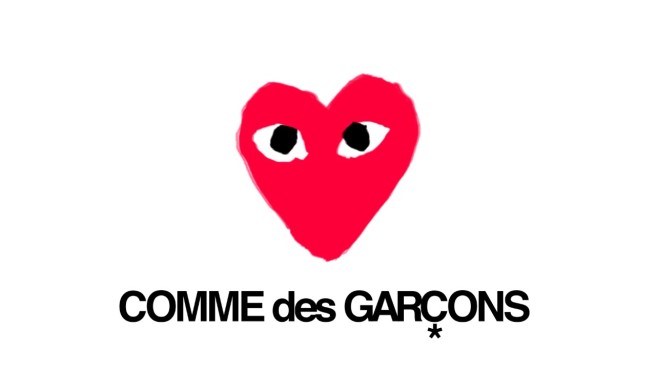
So it’s pretty obvious if you’ve been reading along with my blogs, that I love vintage fashion. The greats of Dior, Chanel, Balenciaga, Vionnet and Poiret, are all influencers on my own tastes in fashion. I fall in love with master tailoring, sublime natural fabrics, handmade garments and embellishments, and anything that comes under the umbrella of chic, classic and feminine. My style icons are Audrey Hepburn, Grace Kelly, Jackie O and Sophia Loren. I love vintage films starring Marilyn Monroe, and am a sucker for classic novels by F Scott Fitzgerald. So when researching who I would dedicate my next blog to, it came as a surprise to me, as I’m sure it will be to you, that I’ve chosen to write about prominent Japanese designer Rei Kawakubo and her eponymous label Comme des Garcons. I decided to delve into this world of contemporary fashion and design as it’s not one that I’m accustom too, but should probably know more about. It’s been interesting to learn about the influence of Japan in fashion, and somewhat eye opening to discover all the imaginary things that Kawakubo has achieved in her career. So if you’re keen to know more about this brand and the statement it has made on modern fashion, then join me on this colourful and creative journey.
The label first gained cult following when it debuted at Paris Fashion Week in 1981. It was different to anything the Paris runways had seen before, and gave a whole new direction on eighties fashions. The label was founded and is still run by Japanese innovator Rei Kawakubo. Kawakubo was born in Tokyo in 1942, and never formally trained in fashion. Studying fine art and literature at Keio University in Tokyo, Kawakubo first went into the advertising industry before finding her niche in fashion. She launched her label in Japan in 1973 and soon engaged a large following for her brand at home. Introducing a menswear line a few years later, Comme des Garcons became greatly successful in its home land. When invited to show in that 1981 fashion week in Paris, the world was greeted with a significant Japanese influence. Showcasing monochrome colours, random elastication, irregular hemlines and crinkled surfaces, Paris was awestruck at this new take on fashion. Dubbed “Oblique Chic” by Vogue, Comme des Garcons had stamped its name all over the runway.

When researching this blog, it became obvious early on that Kawakubo walked to the beat of her own drum. Becoming known for innovative and unconventional pattern cutting, the collections which Kawakubo released were always intriguing and curious. Some of the well know ensembles that bear the Comme des Garcons label feature random ruching, asymmetric seams, unfinished edges and shapeless silhouettes. The brand has an unorthodox appeal, but is greatly accepted by many. The garments are designed and made in Japan, with the flagship store located in Aoyama, Tokyo’s high fashion district. Some of the labels main lines are still handmade, hence their production still being based in Japan. This aspect of luxury handmade goods is reflected in the high price tag, but guaranteed in the quality of craftsmanship that will outlast most other garments produced these days. Other Comme des Garcons boutiques are located in Melbourne, Manila, Beijing and Seoul.
The mass appeal of Comme des Garcons has allowed the brand to grow to enormous stature. In 2011 it was estimated to employ eight hundred staff, and is now reported to turn over $280 million dollars per year. Kawakubo and her brand have since established many other lines that come under the Comme des Garcons family. There is approximately twenty other lines, including Noir, Homme, Shirt (mainly producing shirts), Sport and Black. A street wear line was also introduced and is sold in market based department stores worldwide. Dover Street Market was first established in London, and was home to the diffusion line ‘Play’. This collection is factory produced to reduce costs and to keep up with the demands of ready to wear street culture. Comme des Garcons has also nurtured many collaborations over the years, including works with Nike, Levi’s, Louis Vuitton and H&M. Celebrity followings are large as well, and include Ellen, Kanye, Lady Gaga, Bjork and the late and great Karl Lagerfeld.
Like many other fashion houses of the time, Comme des Garcons also has a range of fragrance. Being agendered, the perfumes are somewhat unconventional, listing ingredients such as oxygen, metal, sand dunes, nail polish and burnt rubber. Many of the designs from Kawakubo also represent the mix of genders, fusing together masculine tailoring with feminine corsets and flowers. Certainly a modern take on this ever changing and evolving world we live in.

In 2017, the Metropolitan Museum of Art in New York paid tribute to the contribution Kawakubo has made to the fashion industry. With an exhibition displaying some 150 ensembles, the white maze like curation was a stunning success. Largely recognised now in fashion circles by the heart shaped logo with two eyes, Comme des Garcons continues to surprise and elevate the world of fashion. From predominantly black and distressed designs to their perplexing cuts and minimalist displays, Comme des Garcons has inevitably established its place among fashions most elite brands and designers. Whilst it may not be my cup of tea, I can certainly pay credit where it is due, and Rei Kawakubo is a fashion master.
Love Always, Anastacia Rose xx




